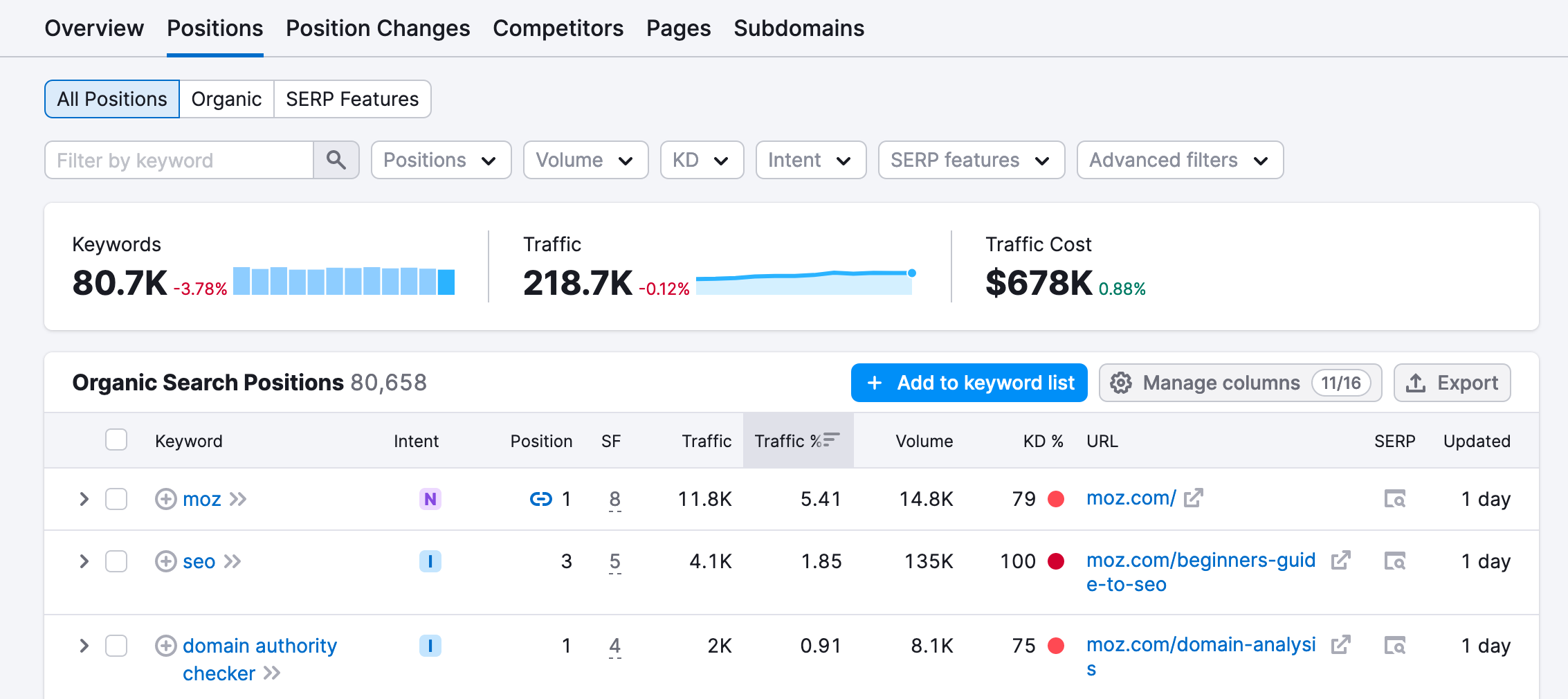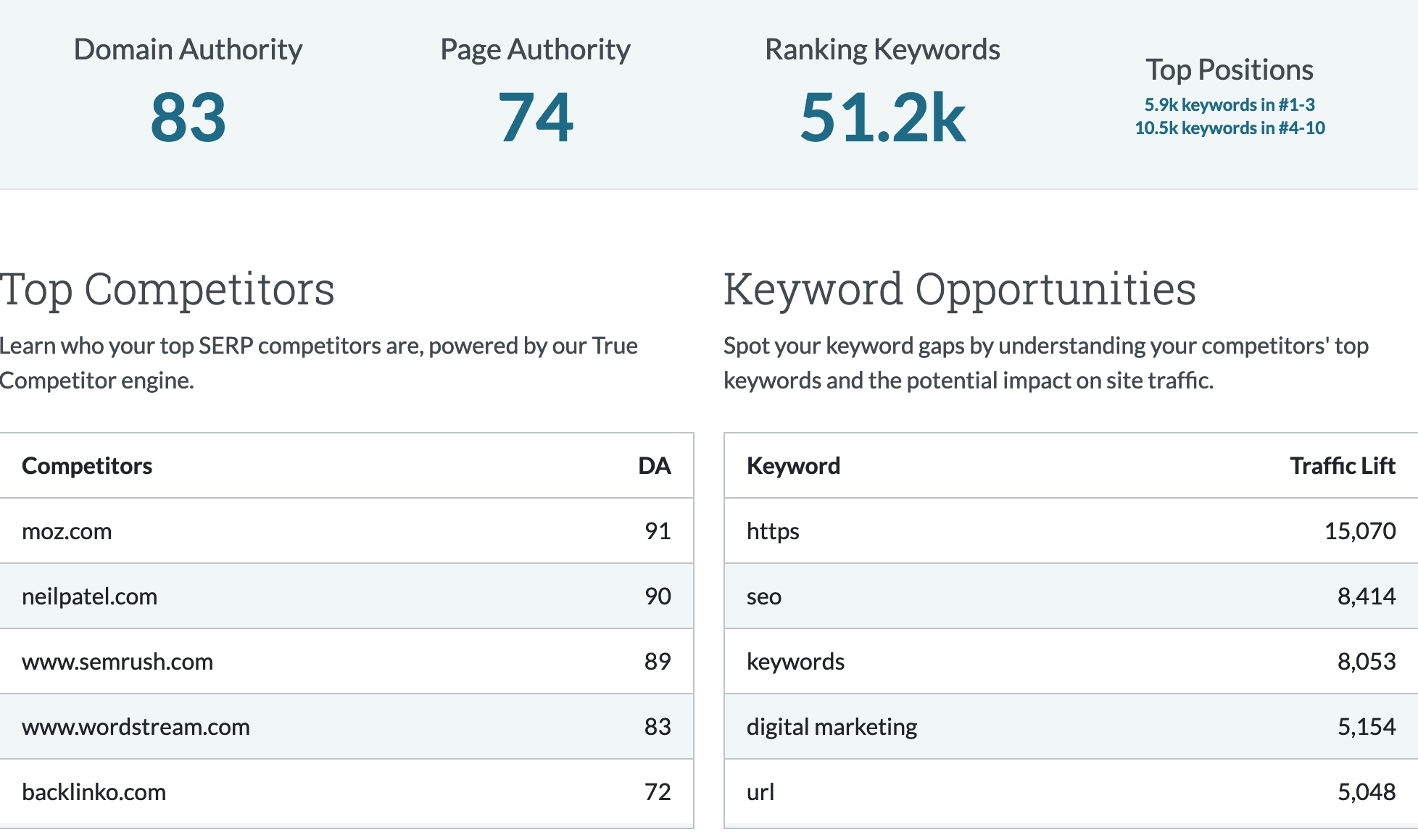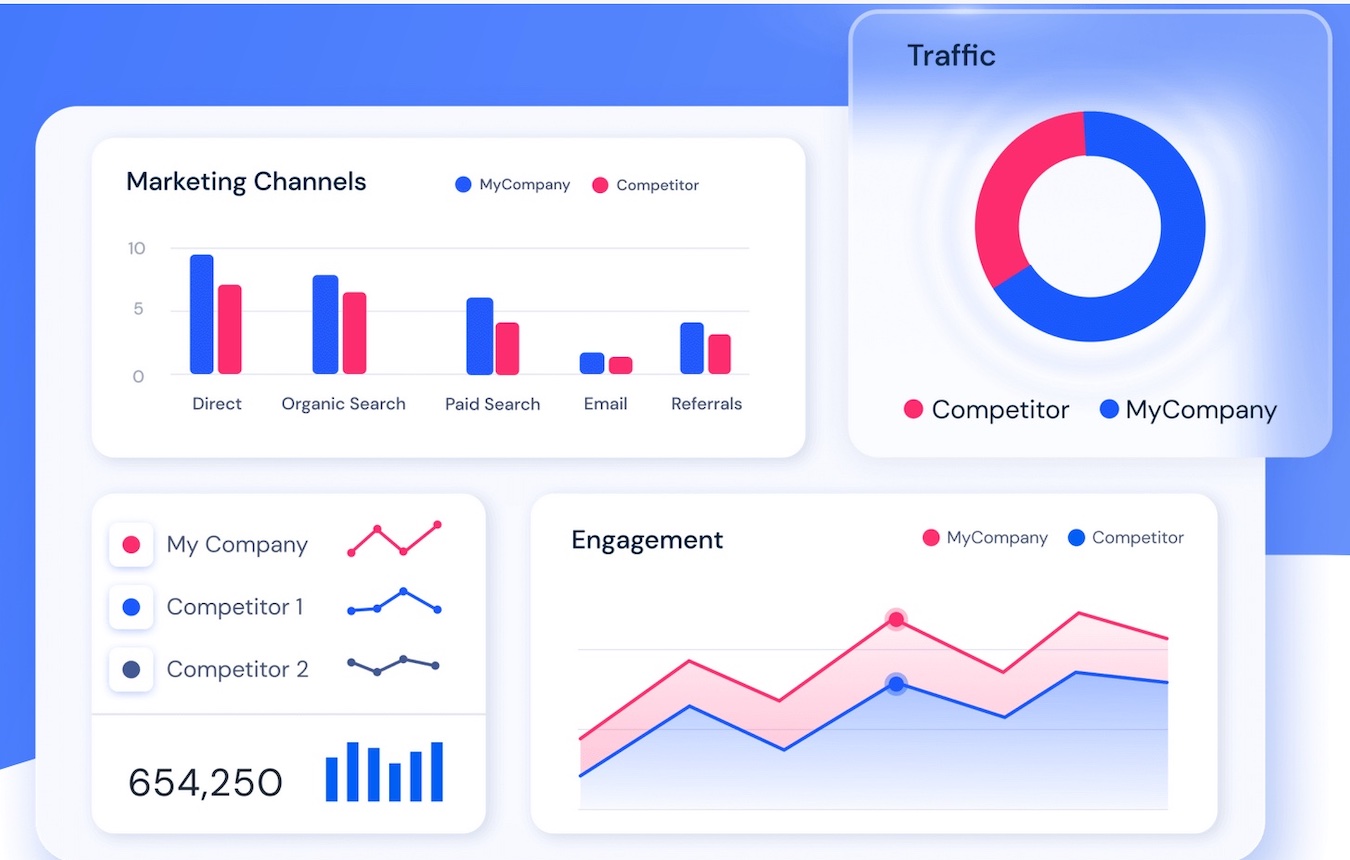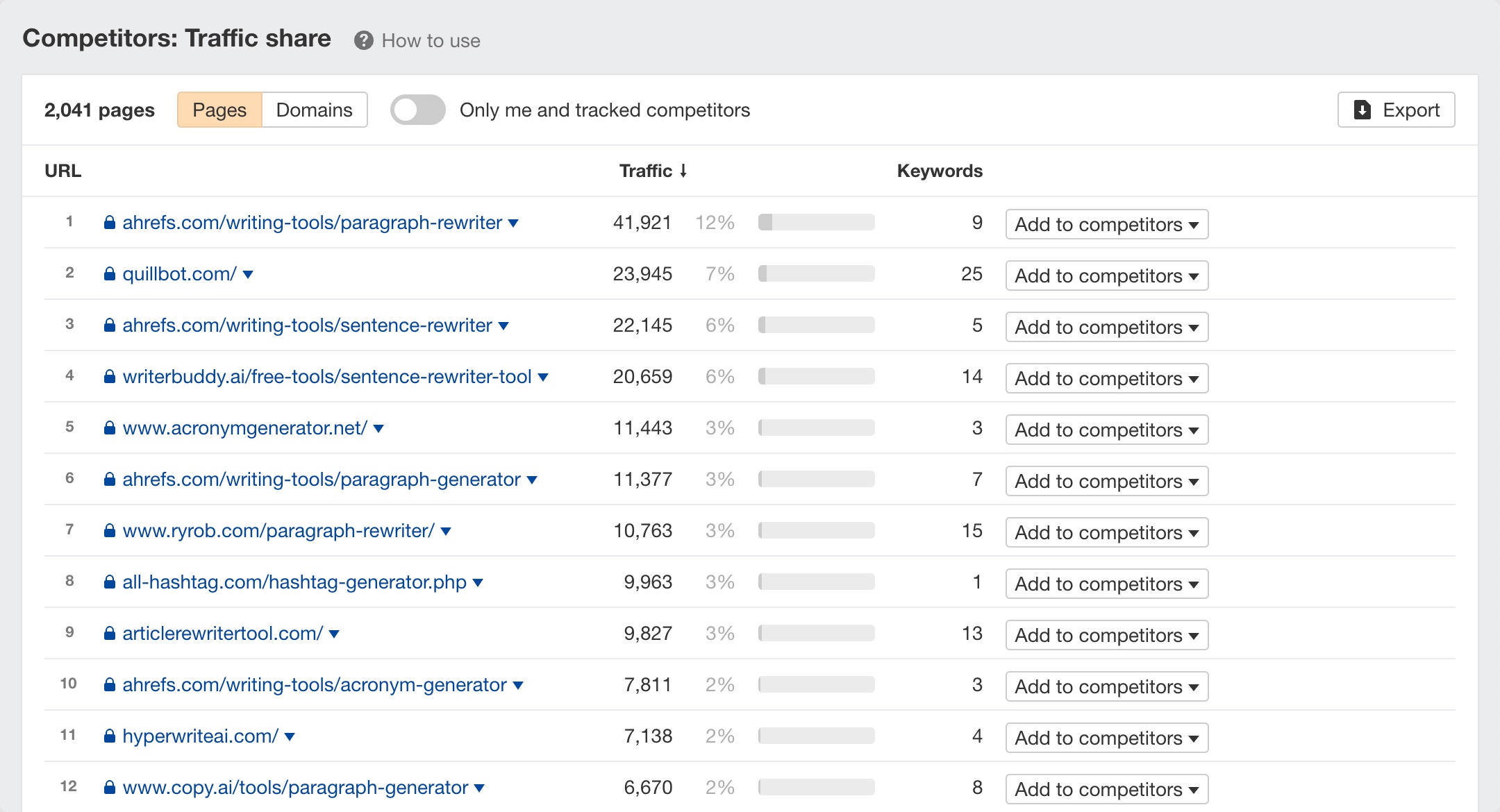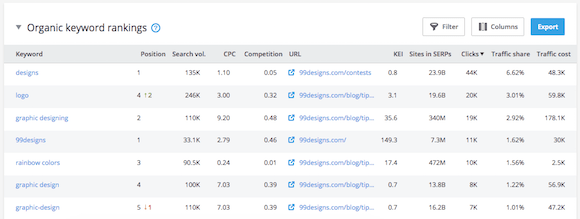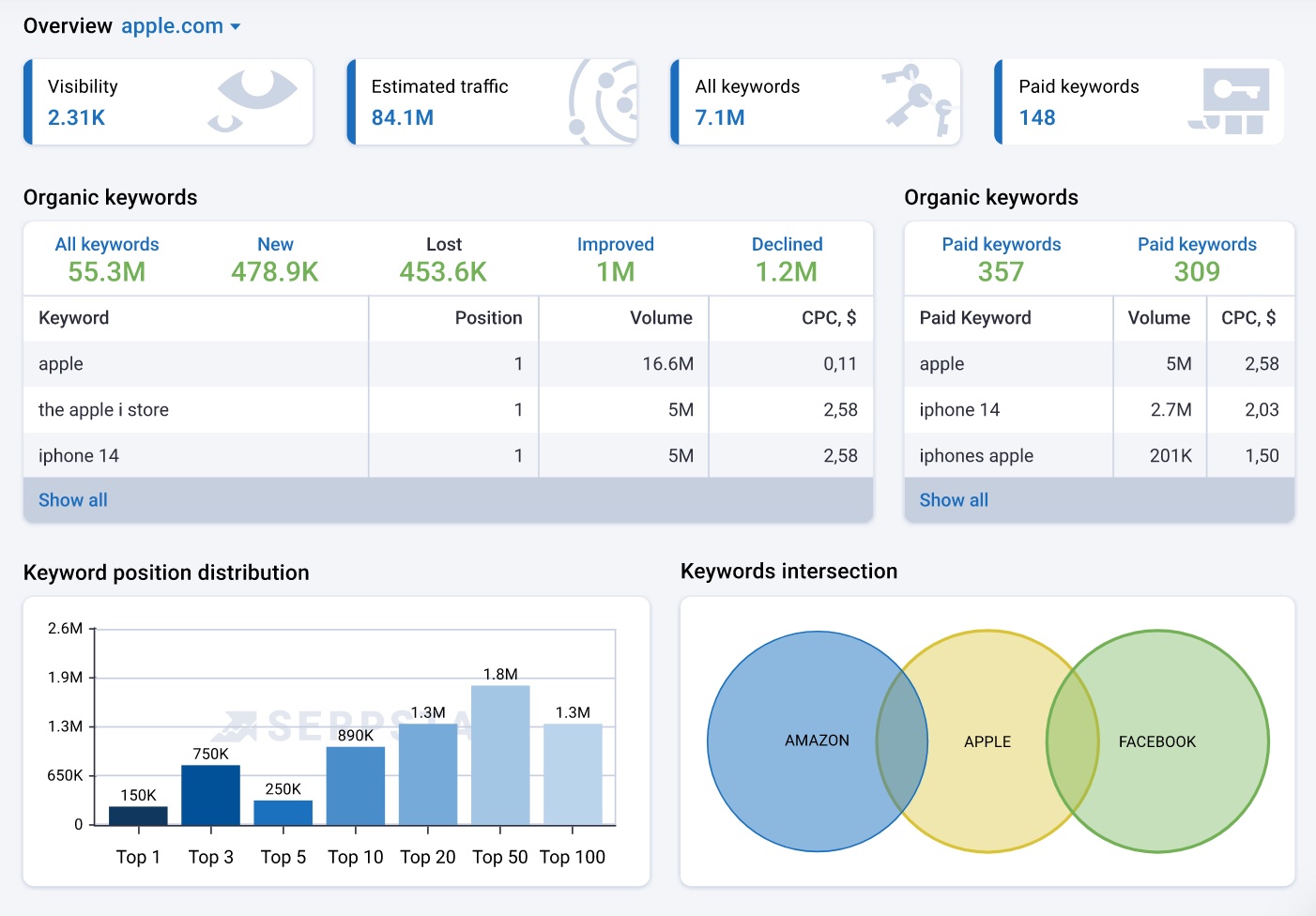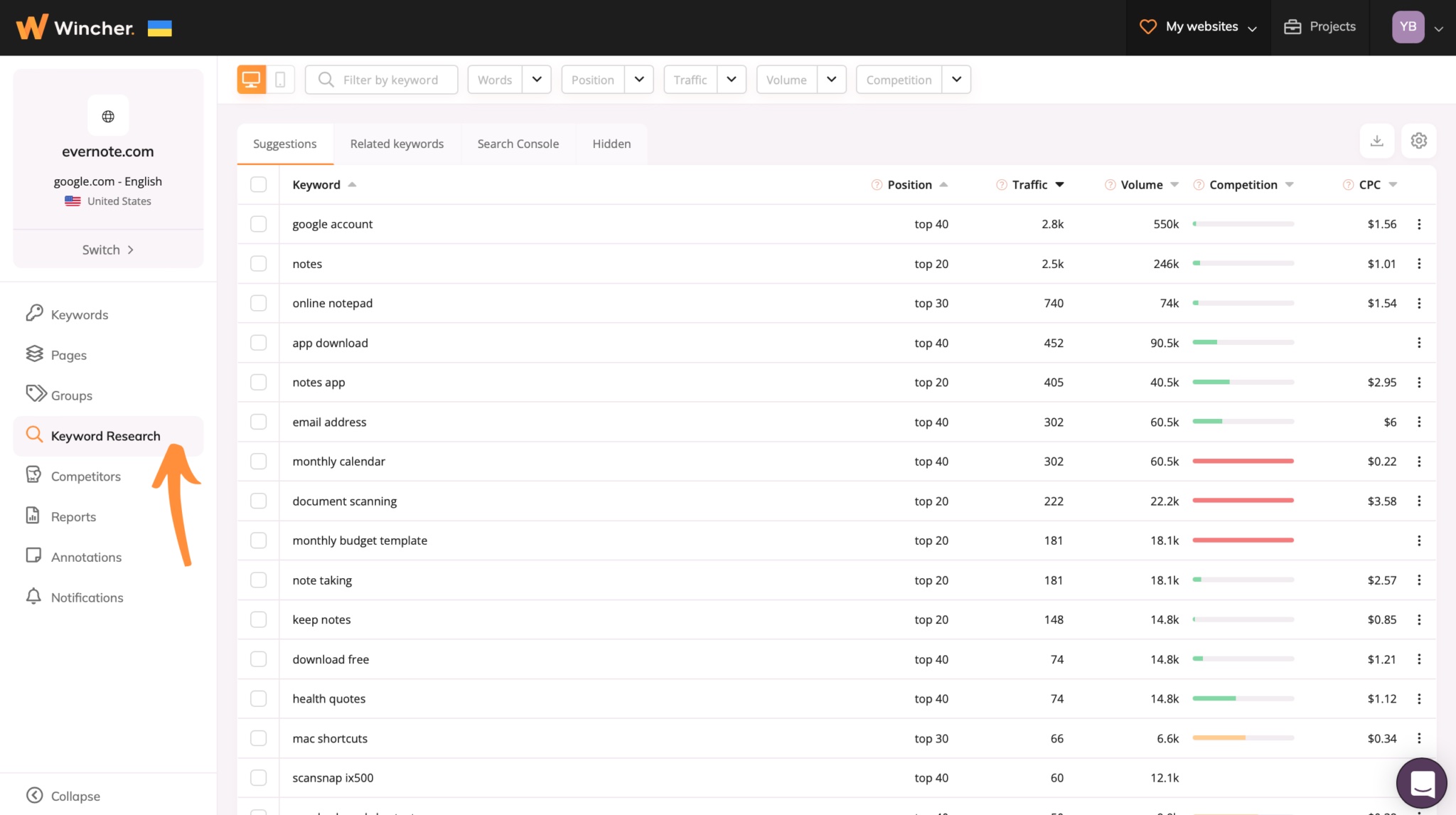10 Little-Known Ways to See How Much Traffic a Website Gets
When the average person visits a website, their eyes follow an F-pattern.
The ‘F-Pattern’ is the most common user ‘eye-scanning pattern’, for blocks of content.
However, I look at websites differently.
I look for something, which only takes seconds to discover…
That allows me to calculate just how much traffic that website gets.
By knowing how much traffic a website gets I can validate the website’s content and calculate how much traffic I would need to get to similar or better results.
In my case, it also helps me decide if I should continue to read or leave the website.
So here they are… 10 little-known techniques for figuring out how much traffic someone else’s website gets.
But first, a recommendation…
The SEMRUSH All-in-one SEO Suite is our favorite tool for checking how much traffic a website gets.
Their Traffic Analytics tool is the best market competitive research tool on the market, allowing you to get estimations of any website’s traffic.
It is also great for spotting your rivals’ strengths and weaknesses and testing a fresh market or niche. If you are ready to use SEMRush then IncomeDiary readers can take advantage of a 14-Day PRO trial.
10 little-known techniques for checking how much traffic a website gets
1. SEMRush.com
My favorite tool for website-based keyword research is SEMRush.com. Here’s a screenshot from searching a competitor website:
There are several reasons why you should use Semrush to see how much traffic a website gets:
Accuracy, Detailed analysis, Competitor analysis, Keyword research.
We use SEMrush for many reasons, to see the traffic and keywords of our competitors, to improve our search engine rankings, to fix SEO errors. I highly recommed that you try there free audit tool while you are tracking other sites traffic. Saved me a lot of money and made a huge difference to our search engine rankings.
Overall, Semrush is a powerful tool that can help you to gain insights into a website’s traffic and make informed decisions about your own website’s traffic strategy. Make sure to check it out today.
2. Moz.com
If you’re looking to gain insights into your competitor’s website traffic and performance, one powerful tool you can use is Moz.com.
Moz is an all-in-one SEO tool that provides you with a range of features to help you improve your website’s search engine rankings and drive more traffic to your website. One of the key features of Moz is its ability to track how much traffic other websites get.
By tracking your competitor’s website traffic using Moz, you can gain valuable insights into their online strategy, identify areas where you can improve your own website’s performance, and stay ahead of your competition.
Moz.com provides you with accurate and up-to-date data on a website’s traffic, including the number of visitors, unique visitors, pageviews, and more. In this way, Moz is an essential tool for businesses looking to succeed in today’s competitive digital landscape.
3. SimilarWeb.com
SimilarWeb is a website traffic checker that’s similar to Alexa, except, it’s got a lot more detail put into it, so it’s more accurate!
Similarweb.com is a powerful tool that allows you to get insights into your competitor’s website traffic, including the number of visitors, traffic sources, top-performing keywords, and more. By tracking your competitor’s website traffic, you can gain valuable insights into their online strategy and identify areas where you can improve your own website’s performance. In this way, Similarweb.com is an essential tool for businesses looking to stay ahead of their competition and succeed in today’s digital landscape.
4. Ahrefs.com
Ahrefs.com is a powerful tool that provides you with a detailed analysis of your competitor’s website traffic, including their traffic sources, top-performing keywords, backlink profile, and more. By tracking your competitor’s website traffic using Ahrefs.com, you can gain valuable insights into their online strategy and identify areas where you can improve your own website’s performance.
This can help you to optimize your website’s content, improve your search engine rankings, and drive more traffic to your website. In this way, Ahrefs.com is an essential tool for businesses looking to stay ahead of their competition and succeed in today’s digital landscape
5. SE Ranking
SE Ranking is somewhat similar to SemRush and Ahrefs. They give you a great amount of detail about your competitor’s organic and paid traffic.
There are several reasons why using SERanking.com to track website traffic can be beneficial:
SERanking.com provides highly accurate data on website traffic, including the number of visitors, unique visitors, and page views. This information can help you to understand how well your website is performing and identify areas for improvement.
Two great tools worth checking out:
Competitor analysis: SERanking.com allows you to compare your website’s traffic with that of your competitors. This information can help you to identify areas where you can improve your website’s traffic and beat your competitors.
Keyword research: SERanking.com provides you with a wealth of information on the keywords that are driving traffic to your website. This information can help you to optimize your website’s content for high-performing keywords and drive more traffic to your site.
6. Ubersuggest
Ubersuggest is a free tool by Neil Patel that can help you track your competitor’s website traffic.
Start by vising Ubersuggest and enter your competitor’s website URL in the search bar and click on “Search”. Once the analysis is complete, click on “Traffic Analyzer” in the left-hand menu and you then see the estimated monthly traffic for your competitor’s website, along with their top organic and paid keywords, and the countries from which they are getting the most traffic.
You can also use the “Top Pages” tab to see which pages on your competitor’s website are generating the most traffic. This information can help you identify which topics and types of content are resonating with their audience.
Another useful feature is the “Content Ideas” tab, which shows you the most popular content on your competitor’s website. This can help you identify content gaps on your own website and create content that is more likely to attract traffic.
7. Serpstat
If you’re interested in finding out how much traffic your competitors are getting, you can use a tool like Serpstat to conduct a traffic analysis. Here’s how you can do it:
1. Go to the Serpstat website and sign up for an account.
2. Once you’re logged in, enter your competitor’s domain name into the search bar and click “Search.”
3. From there, click on the “Organic Research” tab and scroll down to the “Organic Search Positions” section.
4. You’ll see a list of the keywords your competitor is ranking for, along with their position in the search results and the estimated monthly search volume for each keyword.
5. To estimate the amount of traffic your competitor is getting from each keyword, you can multiply the estimated monthly search volume by the click-through rate (CTR) for each position. For example, if your competitor is ranking #1 for a keyword with an estimated monthly search volume of 1,000, and the CTR for that position is 30%, you can estimate that they’re getting around 300 clicks per month from that keyword.
8. Wincher
Wincher.com is a great tool for tracking competitor traffic for several reasons:
1. User-friendly interface: Wincher.com has a simple and intuitive interface that is easy to navigate. Even if you’re not an SEO expert, you can quickly learn how to use it to track your competitor’s traffic.
2. Accurate data: Wincher.com uses advanced algorithms to provide accurate traffic data for your competitor’s website. This data can help you make informed decisions about your own website’s SEO strategy.
3. Competitor analysis: Wincher.com provides a detailed analysis of your competitor’s website, including their top-performing pages and search engine rankings. This information can help you identify areas where you can improve your own website’s SEO.
4. Email alerts: Wincher.com allows you to set up email alerts to notify you of any changes to your competitor’s traffic or search engine rankings. This feature is particularly useful for staying on top of your competition and adjusting your own SEO strategy accordingly.
Overall, Wincher.com is a great tool for tracking competitor traffic because it provides accurate data, detailed analysis, and useful features that can help you improve your own website’s SEO.
9. Search for Interviews
A large percentage of successful website owners do interviews, talking about how they built their site and what works for them. Often, they will share not only how much traffic they get, but also where it’s coming from.
You can see some examples of bloggers talking about how much traffic they get by looking through some of the interviews we have conducted for IncomeDiary.
In my experience, a lot of people are more open about sharing traffic stats than you would think. You see this not just in interviews but if you peruse through the archived articles on a blog, there’s a good chance you’ll stumble upon a “blog in review” or “traffic report” post. With those stats, you can start to figure out how much traffic the site is getting today.
10. Check Advertise Pages
One of the most accurate ways to figure out how much traffic a website gets is to go to its Advertising page.
If a blog is trying to sell advertising space, they need to tell you exactly how many unique views and impressions your ad is going to get every month.
To Wrap Up…
Discovering the amount of traffic a website gets – or at least a good estimation of what it is getting is remarkably easy with the right tools.
If you are an advertiser or a website buyer these strategies will allow you to do your due diligence and confirm (or not confirm) what the seller is claiming.
If you have any ideas or strategies of your own for finding out how much traffic a website gets, please let us know.
Why knowing how much traffic your competitors get is important
Knowing how much traffic your competitors get can provide valuable insights into their online marketing strategy, which can in turn help you improve your own strategy. By analyzing your competitors’ traffic, you can identify the sources of their traffic, the types of content that perform well for them, and the keywords they are targeting.
This information can help you optimize your own website and content to attract more traffic and improve your search engine rankings. Additionally, understanding your competitors’ traffic can help you identify new market opportunities and stay ahead of industry trends. To start:
1. Identify your main competitors: Make a list of your main competitors in your industry or niche.
2. Use a tool like SEMRush: SEMRush is a powerful tool that can help you to research your competitors’ search engine rankings. Enter your competitors’ website URLs into SEMRush’s search bar, and it will provide you with a wealth of information, including their organic search traffic, top organic keywords, backlinks, and more.
3. Analyze their organic search traffic: SEMRush will show you how much organic search traffic your competitors are getting, as well as the countries where their traffic is coming from. This information can help you to identify which keywords and phrases are driving traffic to their website.
4. Check their top organic keywords: SEMRush will also provide you with a list of your competitors’ top organic keywords. This information can help you to identify which keywords they are ranking for and where you can improve your own website’s content to rank for those keywords.
5. Analyze their backlinks: SEMRush will show you which websites are linking to your competitors’ websites. This information can help you to identify potential link-building opportunities for your own website.
FAQs about tracking your competitors website traffic
How to decide which website tracking tool to use?
When deciding which tool to use, it’s important to consider the features you require and the budget you have available. Some tools offer free versions with limited features, while others require a subscription or a one-time payment. The free website audit feature SEMrush and Ahrefs has is very useful, considering it’s free.
What metrics should I track when analyzing competitor website traffic?
Some of the key metrics that you should track when analyzing competitor website traffic include the number of visitors, unique visitors, page views, bounce rate, time on site, and traffic sources.
How can I use competitor website traffic data to improve my own website’s traffic?
By analyzing competitor website traffic data, you can identify areas where your competitors are performing well and use that information to improve your own website’s traffic.
For example, you might identify high-performing keywords that your competitors are using and optimize your own website’s content accordingly.
The Final Word on How Much Traffic a Website Gets
Measuring or estimating how much traffic a website gets is much easier with these traffic tools.
But of course, unless the owner of the website reveals exactly how much traffic they’re getting, any figure is a best estimate.
That said, we find tools like SEMrush and Ahrefs surprisingly accurate when it comes to estimating traffic.
They are good (and essential) for comparing yourself with other websites.
Let us know how you get on using them and if you have some other ways to figure out how much traffic a website gets, do let us know.

